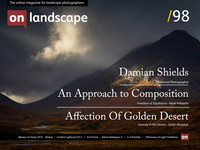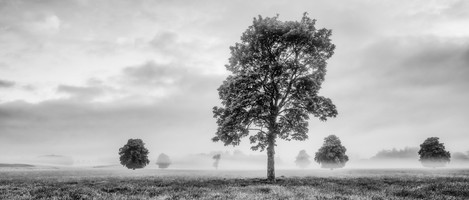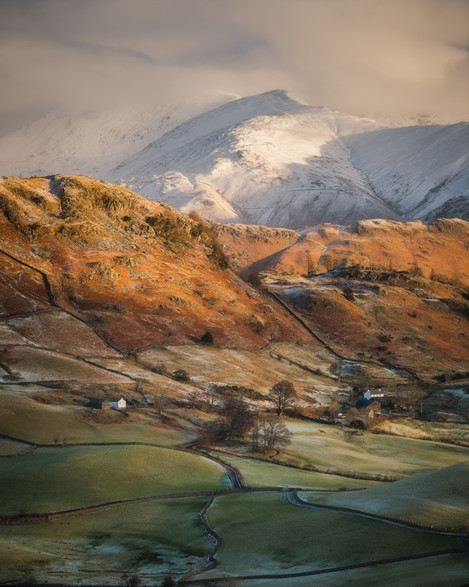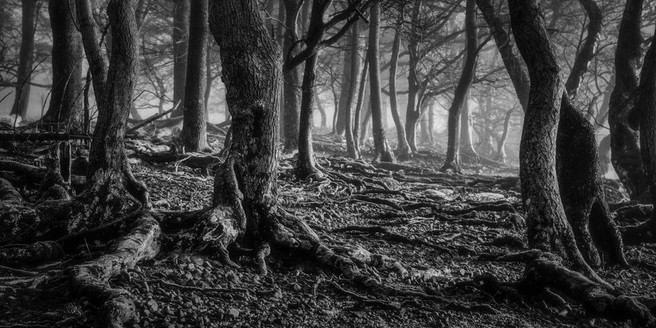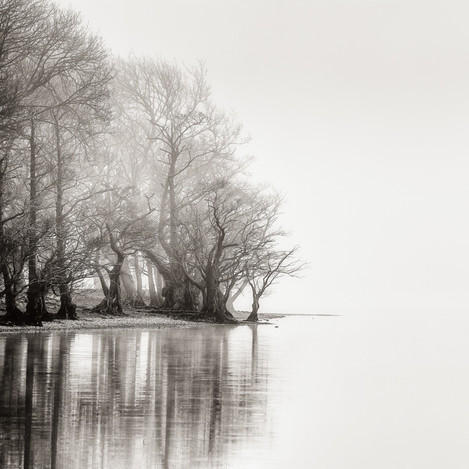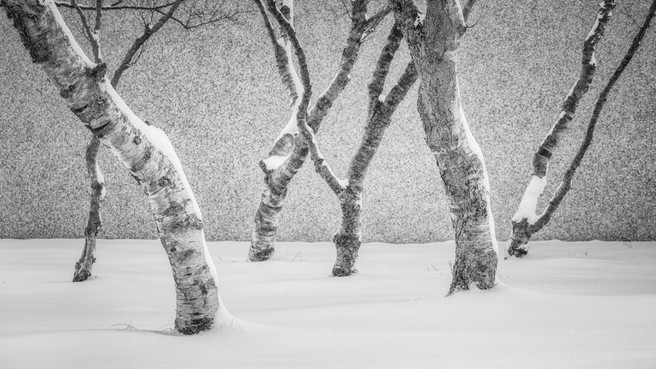Freedom of Expression

Mark Littlejohn
Mark Littlejohn is an outdoor photographer who lives on the edge of a beach in the desolate wastelands of the Highlands of Scotland. He takes photographs of anything unlucky enough to pass in front of his camera.
A couple of weeks ago I was visited up in sunny North Cumbria by young Tim Parkin for a wander with the cameras. We ended up spending a very enjoyable 24 hours in the area of Hallin Fell and Place Fell on the Southern shores of Ullswater. We spent the time roaming through Hallinhag Wood and the edges of Kilbert How looking over towards Catstycam. Tim asked me my thoughts on composition whilst we were out and about. Truth be told I don’t tend to give much thought to the technical aspect of composing an image. I prefer to go out without any stated aims or objectives.
Preconceptions can lead to missing that little gem of a shot whilst you are en route elsewhere. That does mean that most of my shots are very conditions dependent. Light is always key for me. I take very few shots before dawn or at sunset. I like to see the play of light and dark and it can form a major part of the composition. Shooting in low light can also be an issue as I far rather working without tripod or filters. I personally find that when I use a tripod I can become quite anal about composition, down to the most minute detail. A case in point is image #1. This was taken just after dawn in the Eden Valley. I did like the arrangement of the trees but I had to arrange the placement of all the hanging branches in just such a way that all the various parts complemented each other. That involves the use of live-view and and number of finite adjustments. The result is an image that holds no emotional appeal for me.
Mist, or at least being on the edge of the mist, has always been a huge draw for me. I quite often shoot misty scenes at f5.6 or thereabouts. When composing an image I see no issues in using a larger than might be expected aperture. I’m really not fussed by sharpness all over the frame, particularly in misty scenes. Any elements towards the rear of the frame will already start to recede long before they feel the effect of the lack of the depth of field. I find it increases the sense of depth through a shot and the resulting softness can help to get the imagination to become involved. Image #3 is an example where I have used a mid focal length and an aperture of f5.6 to produce this effect. The foreground trees and their almost primordial roots draw you in and the tangle of associated roots throughout the floor of the wood furthers the surreal edge. I used a 2:1 crop to remove any light from the frame and to concentrate the eye on the darkness of the trees.
I don't often produce what might be termed minimal images but image #4 is one from the edges of Aira Point on Ullswater. Shot with a long lens and a large aperture. I always think of the two P’s – proportions and positioning when composing a minimal shot. The amount of content versus the amount of space is a very personal one as is where the main element sits in the frame. On this occasion the blurred reflections balance nicely with the layered detail of the trees. I could have given them more space as there was plenty of misty nothingness that day but I wanted the trees to be quite imposing. The image was named the gathering and I wanted them to retain some impact. There doesn't seem to be a right or a wrong way to position the main element within a square crop so on this occasion I composed the shot using the bottom left corner as my anchor point and composed outwards from there.
Trees have been the focus of the majority of my compositions over the last several months. I like the relationships between groups of trees. I like groupings that have their own distinct characters such as these six in a garden in Reykjavik. They were again shot with a long lens and a larger than usual aperture. The graphic nature of the arrangement drew me in. The two “leaders” in the front angled one way and the four “subordinates” in the rear angled the other. As always when photographing a group of trees I tend to be rather anal in the way they are arranged so as to give each element its own bit of space. This can involve a wee bit of moving backwards, forwards and side to side. The reasoning behind the longer lens/larger aperture was to try and blur the background, which was a pebble dashed garage wall. The lack of detail leads to a lack of certainty as to what this background actually is. This uncertainty is a key aspect of the frame and is another example of trying to avoid perfect sharpness throughout the frame.
I don’t tend to consider leading lines, foreground interest or the rule of thirds when considering my compositions. It is more about how to best capture that aspect of the landscape that has caught my eye. From then on I work towards what format or crop the image is going to take. This directly relates to what I am going to use to balance the image and where I am going to set my anchor point. That’s pretty much the sum total of how I compose an image.

